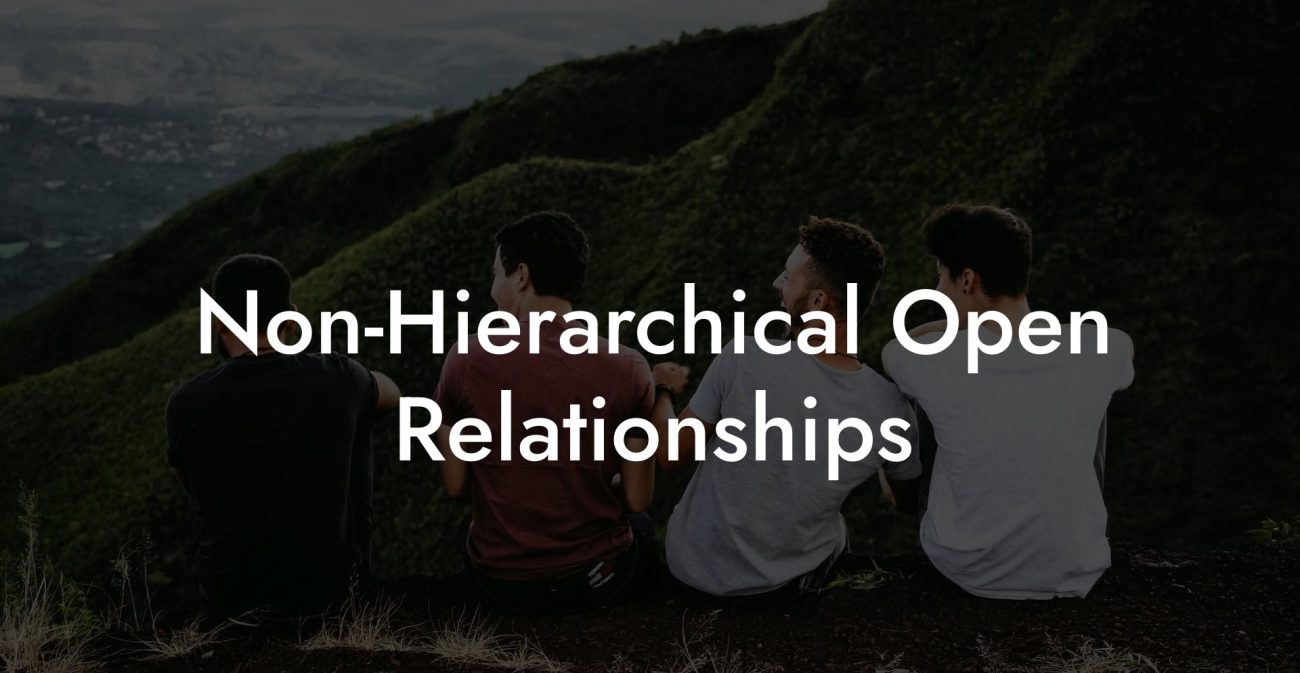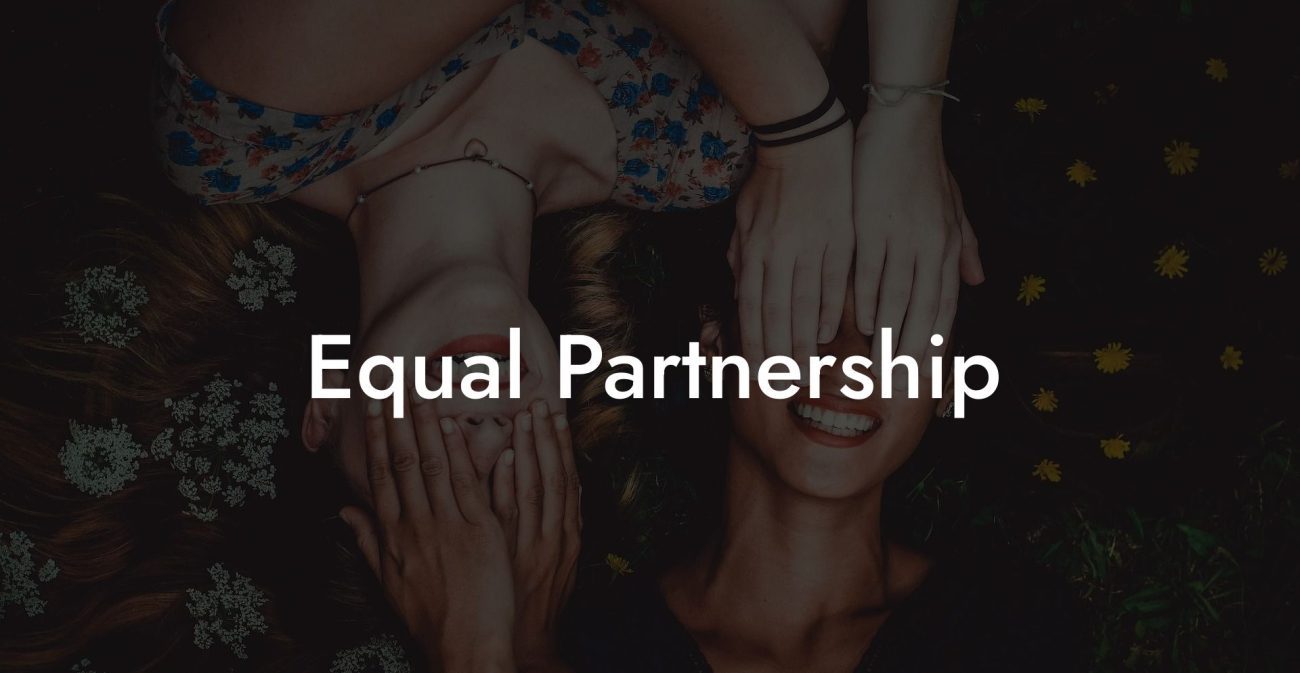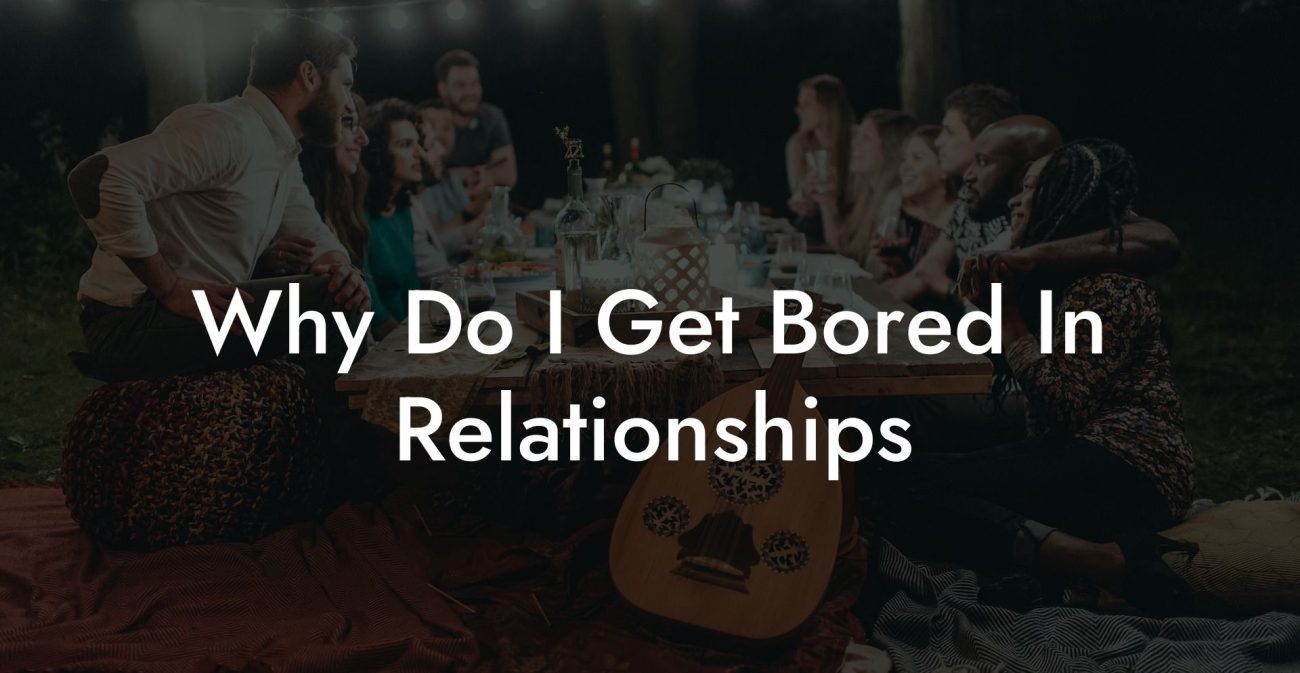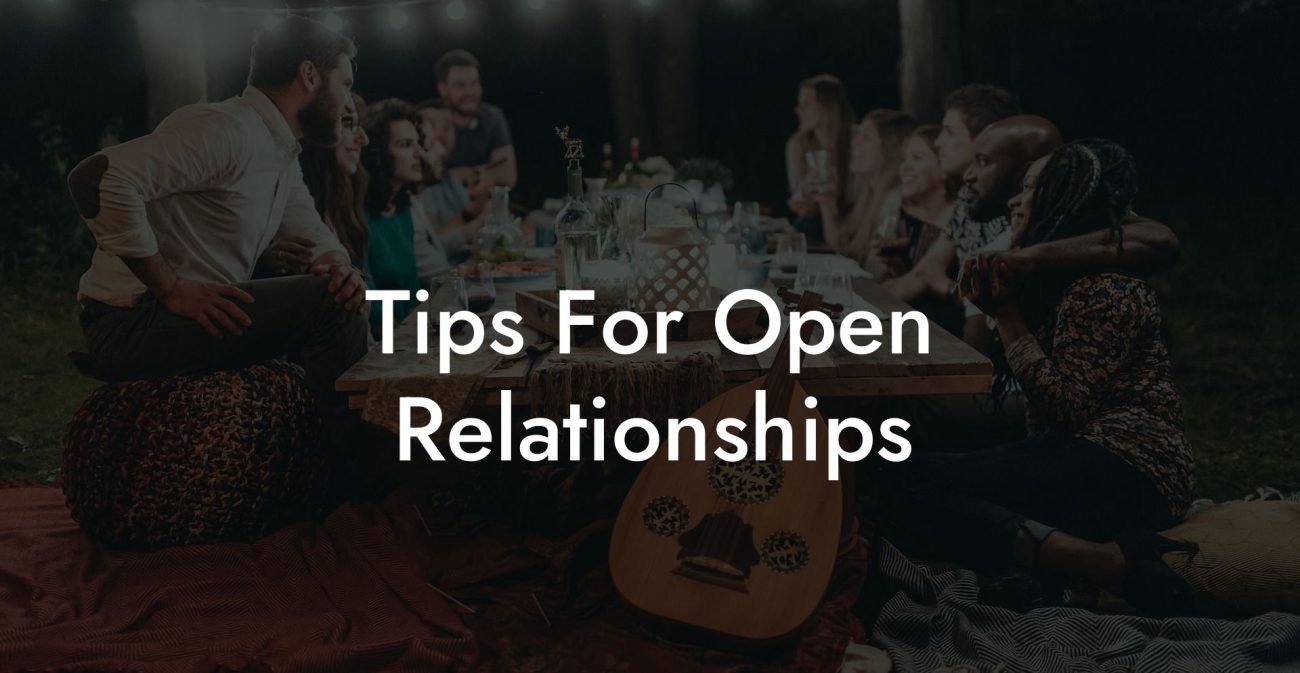Guide to Polyamorous Dating Partners Friends

Imagine a world where your closest friends are also the ones who set your heart on fire, where every conversation feels like a deep, soulful exchange that blurs the boundaries between platonic connection and passionate romance. In the realm of polyamory, dating isn’t confined to a simple label, it's a vibrant spectrum of relationships that can include both partners and friends, each playing a unique role in your life. This guide to polyamorous dating partners friends is your comprehensive roadmap to navigating, nurturing, and celebrating those multifaceted relationships. Get ready to dive into a universe where emotional intimacy, friendship, and romance intertwine in ways that are as dynamic and diverse as you are.
Quick Links to Useful Sections
- Understanding Polyamorous Dating Partners Friends
- Defining the Concept
- Why Polyamorous Dating Partners Friends Matter
- The Richness of Multifaceted Connections
- Emotional and Social Benefits
- The Challenges of Polyamorous Dating Partners Friends
- Managing Jealousy and Insecurity
- Balancing Time and Energy
- Negotiating Evolving Boundaries
- Social Stigma and External Pressures
- Effective Communication Strategies
- Creating a Safe Space for Dialogue
- Using Digital Tools to Facilitate Communication
- Setting and Maintaining Boundaries: Practical Examples
- Emotional Boundaries
- Physical Boundaries
- Time Boundaries
- Communication Boundaries
- Strategies for Integrating Boundaries into Your Daily Life
- Establish a Routine for Reviewing Boundaries
- Document Your Agreements
- Use Technology to Stay Organized
- Engage in Regular Self-Reflection
- Building a Supportive Community Around Polyamory Boundaries
- Connecting with Like-Minded Individuals
- Workshops and Webinars
- Therapy and Counseling
- Real-Life Stories and Testimonials
- Case Study: Jamie’s Boundary Breakthrough
- Case Study: Taylor’s Journey to Emotional Clarity
- Expert Insights on Polyamory Boundaries
- FAQ: Your Polyamory Boundaries Examples Questions Answered
Understanding Polyamorous Dating Partners Friends
Defining the Concept
Polyamorous dating partners friends are relationships that combine the best of both worlds: they are both dating relationships and deep, supportive friendships. In these connections, individuals share not only romantic and/or sexual intimacy but also a profound platonic bond. These relationships often blur the traditional lines between “just friends” and “romantic partners,” offering a spectrum of connection that can range from light and playful to deeply committed and emotionally rich.
In the polyamorous community, these relationships are celebrated for their flexibility and authenticity. They allow you to form bonds that are not limited by societal expectations of exclusivity. Instead, they embrace the idea that love can be shared in many different ways, and that the emotional support found in friendship can enhance the passion found in romance.
Why Polyamorous Dating Partners Friends Matter
The Richness of Multifaceted Connections
One of the greatest benefits of blending dating with friendship in a polyamorous context is the diversity of emotional support available to you. When your partners are also your friends, they often understand you on a deeper level. They can celebrate your successes, help shoulder your burdens, and provide comfort during difficult times. This multifaceted support system creates a safety net that enriches every aspect of your life.
Additionally, poly dating friendships allow for more honest and transparent communication. Friends tend to be more candid about their feelings, and when those friendships evolve into romantic connections, that openness carries over. This results in a relationship where both the fun, flirty side of dating and the profound, supportive aspects of friendship coexist harmoniously.
Emotional and Social Benefits
In a polyamorous setting, relationships that are both dating and friendship offer numerous benefits:
- Diverse Emotional Support: Each partner may contribute a unique perspective or type of care, one might be your rock during stressful times, while another sparks your creativity and adventurous spirit.
- Enhanced Communication: With the comfort of friendship, conversations are often more open, honest, and vulnerable, which can lead to deeper intimacy.
- Flexibility and Freedom: These relationships do not require you to force a one-dimensional role. You have the freedom to explore multiple aspects of your identity simultaneously.
- Personal Growth: Navigating such diverse connections challenges you to understand your own emotional needs better, which fosters personal development and resilience.
- Community and Belonging: Polyamorous dating friends often form a tight-knit community where support and shared experiences enhance overall well-being.
The Challenges of Polyamorous Dating Partners Friends
Managing Jealousy and Insecurity
Even in relationships built on deep friendship and love, feelings of jealousy and insecurity can arise. It is natural to occasionally feel threatened by the attention your partner gives to others, or to worry that your own importance might diminish in the face of multiple connections. These emotions can be compounded in polyamorous settings where boundaries are more fluid.
The key to overcoming jealousy is to acknowledge these feelings without judgment and to address them through honest communication and self-reflection. Understanding that jealousy is a signal for deeper issues can transform it into an opportunity for personal growth.
Balancing Time and Energy
One of the most practical challenges in any polyamorous relationship is time management. When you’re involved in multiple relationships that are both dating and friendship, it’s easy to feel overwhelmed or stretched too thin. Each connection demands its own time, energy, and emotional investment.
Effective scheduling and prioritization are essential. Without a clear plan, you risk burnout and might inadvertently neglect one or more relationships. Learning to manage your time effectively is a skill that benefits all areas of your life.
Negotiating Evolving Boundaries
Boundaries in polyamorous relationships are not static, they evolve as your relationships and personal needs change. Negotiating these evolving boundaries can be challenging, as it requires continuous, honest dialogue among all parties involved. Misunderstandings may arise if boundaries are not clearly defined or if expectations shift over time.
The key is to establish flexible guidelines and to revisit them regularly. This ensures that everyone’s needs are met and that the relationship remains healthy and dynamic.
Social Stigma and External Pressures
Despite increasing acceptance, polyamorous relationships still face societal stigma. Friends, family, or even coworkers may have misconceptions about non-monogamous relationships, which can lead to feelings of isolation or self-doubt.
Building a supportive network and finding communities that understand and celebrate polyamory can help mitigate these external pressures. When you surround yourself with like-minded individuals, you not only validate your own experience but also contribute to a broader cultural shift toward acceptance.
Effective Communication Strategies
Creating a Safe Space for Dialogue
Open communication is essential in any polyamorous relationship, particularly when dealing with complex emotions like jealousy or insecurity. Establishing a safe, non-judgmental space for conversation can help all parties express their feelings honestly. Use “I” statements to communicate your emotions without casting blame, for example, “I feel a bit insecure when…” instead of “You always make me feel…”
Consider setting aside regular time, such as weekly or monthly check-ins, where each person can share their feelings, review boundaries, and discuss any necessary adjustments. This routine not only prevents issues from building up but also reinforces a culture of openness and trust.
Using Digital Tools to Facilitate Communication
In today’s digital age, technology can play a key role in managing polyamorous relationships. Shared calendars, group chats, and relationship management apps (like Trello or Notion) can help coordinate schedules, remind you of check-in times, and provide a platform for documenting agreements and reflections.
These tools make it easier to stay organized and ensure that everyone’s voice is heard, even amidst busy schedules.
Setting and Maintaining Boundaries: Practical Examples
Emotional Boundaries
Emotional boundaries help define the level of emotional intimacy each relationship will have. For example, you might decide to reserve certain conversations or vulnerable moments exclusively for your primary partner, while maintaining a lighter, more supportive connection with others.
- Example: “I’d like to have our deep, personal check-ins just between us, while I share general updates with my other partners.”
Physical Boundaries
Physical boundaries outline what types of physical intimacy are acceptable in each relationship. This can include guidelines on public displays of affection or the extent of sexual activity with different partners.
- Example: “I’m comfortable with holding hands with all my partners in public, but more intimate physical interactions are reserved for private time with my primary partner.”
Time Boundaries
Time boundaries ensure that each relationship receives the attention it needs without overwhelming your schedule. Using shared calendars and scheduling dedicated time slots for one-on-one connections can be very effective.
- Example: “Let’s schedule a date night every Friday for our one-on-one time, and reserve Sundays for group activities with our other partners.”
Communication Boundaries
These boundaries clarify how much detail is shared about other relationships and set expectations for the frequency and type of communication. This helps maintain transparency while respecting each partner’s privacy.
- Example: “I prefer to keep details about my interactions with other partners minimal in our private conversations, so that we can focus on our connection.”
Strategies for Integrating Boundaries into Your Daily Life
Establish a Routine for Reviewing Boundaries
Regularly revisiting and discussing your boundaries is crucial. Set aside time, whether monthly or quarterly, to review what’s working and what might need adjustment. This proactive approach ensures that everyone’s needs are met as circumstances change.
Document Your Agreements
Consider creating a digital or written document that outlines your agreed-upon boundaries. This “relationship contract” isn’t legally binding but serves as a useful reference that all partners can revisit.
Use Technology to Stay Organized
Digital tools can help you manage and enforce boundaries effectively. Shared calendars, communication apps, and digital journals provide a structured way to coordinate your time and track your interactions, ensuring that each relationship remains balanced.
Engage in Regular Self-Reflection
Personal growth is a continuous process. Regular self-reflection, through journaling, meditation, or therapy, helps you understand your needs and emotional responses better, which in turn informs your boundary-setting. When you know your limits, you can communicate them more effectively.
Building a Supportive Community Around Polyamory Boundaries
Connecting with Like-Minded Individuals
One of the most enriching aspects of polyamory is the community that forms around it. Engaging with others who share similar experiences can provide not only validation but also practical advice on boundary-setting. Whether it’s through online forums, local meet-ups, or polyamory workshops, a supportive network can offer insights and encouragement.
Workshops and Webinars
Consider attending workshops or webinars focused on polyamory and relationship management. These events provide opportunities to learn from experts, share your own experiences, and gain new perspectives on how to create and maintain healthy boundaries.
Therapy and Counseling
Professional guidance can be invaluable, especially when navigating complex emotional terrain. Therapists or relationship coaches who specialize in non-monogamous relationships can offer personalized strategies to help you manage jealousy, set effective boundaries, and improve communication skills.
Real-Life Stories and Testimonials
Case Study: Jamie’s Boundary Breakthrough
Jamie struggled with feeling overwhelmed by multiple relationships until they decided to establish clear boundaries. By scheduling regular check-ins, creating a shared digital calendar, and writing down their expectations, Jamie was able to transform chaos into clarity. This breakthrough not only reduced Jamie’s stress levels but also improved the quality of their relationships, as each partner felt more secure and understood.
Jamie’s experience demonstrates that proactive boundary-setting can lead to a more balanced and fulfilling polyamorous life.
Case Study: Taylor’s Journey to Emotional Clarity
Taylor found that unclear communication about emotional availability was causing friction in their relationships. Through therapy and group workshops, Taylor learned to articulate their needs and set firm yet flexible boundaries regarding emotional intimacy. Over time, these changes led to a significant reduction in jealousy and an increase in overall relationship satisfaction. Taylor now shares their story as a testament to the power of self-reflection and open dialogue in managing polyamorous relationships.
Expert Insights on Polyamory Boundaries
Experts in polyamory emphasize that boundaries are not barriers to connection but the foundations that support diverse and resilient relationships. Dr. Elena Rivera, a therapist specializing in non-monogamous dynamics, notes, “Establishing clear boundaries in polyamory is essential for building trust and ensuring that all partners feel respected. It allows you to express your needs honestly and creates a framework for healthy, sustainable connections.”
Relationship coach Marcus Lee adds, “When everyone in a poly network knows what to expect, it minimizes misunderstandings and opens the door to deeper intimacy. Boundaries are dynamic, they evolve with you, and that evolution is what makes polyamorous relationships so rich and rewarding.”
FAQ: Your Polyamory Boundaries Examples Questions Answered
1. What are polyamory boundaries?
Polyamory boundaries are the guidelines and limits agreed upon by all partners to ensure that each relationship is respectful, secure, and fulfilling. They encompass emotional, physical, time, and communication aspects.
2. Why are boundaries important in polyamorous relationships?
Boundaries help prevent misunderstandings, reduce jealousy, and protect everyone’s emotional well-being by clearly defining what is acceptable and what isn’t in each relationship.
3. How do I start setting boundaries in my poly relationships?
Begin with self-reflection to understand your own needs and limits. Then engage in open, honest dialogue with your partners using “I” statements, and consider documenting your agreements to ensure clarity.
4. Can boundaries change over time?
Absolutely. As relationships evolve, so should the boundaries. Regularly revisiting and adjusting your agreements ensures that they continue to meet everyone’s needs.
5. What are examples of emotional boundaries?
Emotional boundaries might include defining exclusive emotional time with a primary partner, setting limits on the depth of emotional involvement, or agreeing on what personal information is shared among partners.
6. What are examples of physical boundaries?
Physical boundaries can include agreements on safe sex practices, specifying which sexual activities are acceptable, or setting guidelines for public displays of affection.
7. How can I manage time boundaries in a poly relationship?
Use shared digital calendars and scheduling apps to plan dedicated quality time with each partner. This ensures that your schedule is balanced and that everyone feels valued.
8. How do I handle communication boundaries?
Establish clear guidelines for how frequently you check in with each partner, decide on the amount of detail shared about other relationships, and set up regular discussions to ensure everyone remains on the same page.
9. What if a partner doesn’t respect the established boundaries?
Address any boundary breaches through open, honest conversation. If necessary, seek external support from a therapist or relationship coach to help reinforce your agreements.
10. Where can I find more resources on polyamory boundaries?
Resources such as "The Ethical Slut" and "More Than Two", podcasts like “Multiamory,” and online communities on Reddit and Facebook provide extensive insights and practical advice on setting and maintaining healthy boundaries.
Resources and Community Support: Your Next Steps in Mastering Polyamory Boundaries
- "The Ethical Slut" by Dossie Easton & Janet Hardy – A must-read guide on ethical non-monogamy and boundary-setting.
- "More Than Two" by Franklin Veaux & Eve Rickert – Provides personal narratives and practical strategies for managing multiple relationships.
- Podcasts: Tune in to “Multiamory” and other polyamory-focused shows for insights and advice.
- Online Communities: Join polyamory forums on Reddit (e.g., r/polyamory) and Facebook groups to connect with others.
- Workshops: Participate in webinars and local workshops focused on communication, self-care, and boundary-setting in poly relationships.
- Therapy and Counseling: Seek guidance from professionals experienced in non-monogamous relationships to help navigate any challenges.
Mastering the art of setting and respecting boundaries is key to nurturing your polyamorous relationships. With self-reflection, effective communication, and the support of a vibrant community, you can create a space where every relationship blossoms in its own unique way.
Lost & confused by all of the terms, types and seemingly made up 3 letter acronyms?? We've got you. Check out our Ethnical Non-Monogamy Dictionary >>
Useful Interruption: Not sure which relationship vibe fits you best? Take our Relationship Test, it’ll give you the real insight into your natural relationship style. Then, dive into our binge-worthy guides (from the tried-and-true to the “wait, that’s a thing?”) and find the perfect relationship type for your life:
- Monogamy
- Open Relationships
- Ethical Non-Monogamy
- Solo Polyamory
- Non-Hierarchical Polyamory
- Hierarchical Polyamory
- Relationship Anarchy
- Swinging
Now back to the main article but yeah take the test...












